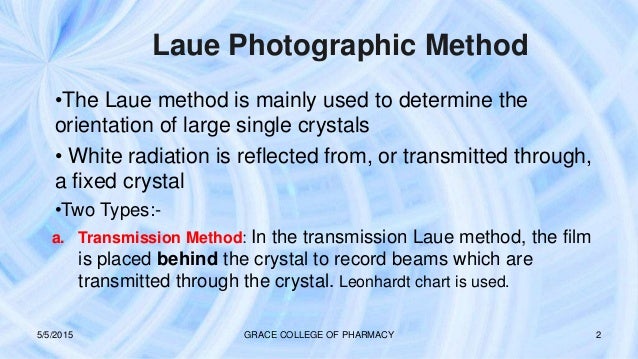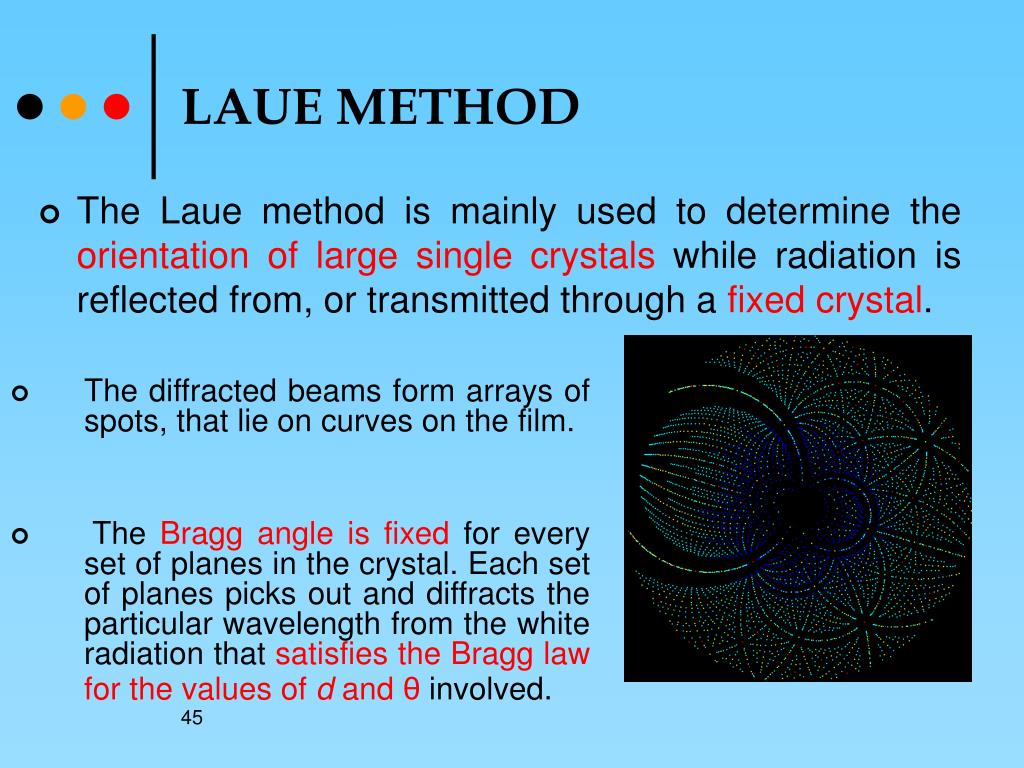

Use, and to share such copies with other Authorized Users of Licensee within Licensee's computer network Of individual Documents, or portions of such Documents for the Authorized User's personal (ii) Single-Site and Multi-Site Licenses: May not otherwise be sold or resold, rented, leased, lent or sub-licensed. Internal use within your organization it may not be copied. The single hard copy print may only be distributed to others for their That is, theĮlectronic file cannot be emailed, downloaded to disk, copied to another hard drive or

In addition, the electronicįile may not be distributed elsewhere over computer networks or otherwise. The single hard copy print may be reproduced in anyway. Printing one copy of a Document for individual use. Of a Document) for temporary storage on one computer for purposes of viewing, and/or
#BACK REFLECTION LAUE METHOD DOWNLOAD#
That is, Licensee may access and download an electronic file of a Document (or portion Of individual Documents, or portions of such Documents, solely for Licensee's own use. (b) the right to download, store or print single copies (a) the right to browse, search, retrieve, display and view the Product Permitted and described below, each ASTM Product to which Licensee has subscribed.
#BACK REFLECTION LAUE METHOD LICENSE#
Revocable, nonexclusive, non-transferable license to access, by means of one or moreĪuthorized IP addresses, and according to the terms of this Agreement, to make the uses Or employee of the Licensee, at the Single or Multiple Site. To this Product if a Site License, also includes registered students, faculty or staff member, Independently administered multiple locations within one city or an organization orĬompany located in more than one city, state or country, with central administration for all locations. Sites within one city that are part of a single organization unit administered centrally įor example, different campuses of the same university within the same city administered centrally.

The copyright notice or other notice contained in the ASTM Product or Documents.Ī single unique computer, with an individual IP address (in both electronic file and hard copy) belong to ASTM. This is not a sale all right, title and interest in the ASTM Product or Documents (Licensee) have no ownership or other rights in the ASTM Product or in the Documents. ("ASTM"), 100 Barr Harbor Drive, West Conshohocken, PA 19428-2959 USA, except as may beĮxplicitly noted in the text of the individual Documents. Promptly exit this page without entering the ASTM Product.Ĭompilation and as individual standards, articles and/or documents ("Documents") by ASTM If you do not agree to the terms of this License Agreement, IMPORTANT- READ THESE TERMS CAREFULLY BEFORE ENTERING THIS ASTM PRODUCT.īy purchasing a subscription and clicking through this agreement, you are entering intoĪ contract, and acknowledge that you have read this License Agreement, that you understand It is the responsibility of the user of this standard to establish appropriate safety and health practices and determine the applicability of regulatory limitations prior to use. This relation between unit cell position and surface geometry is most conveniently expressed by stereographic or gnomonic projection.ġ.3 The values stated in inch-pound units are to be regarded as the standard.ġ.4 This standard does not purport to address the safety problems associated with its use. The "orientation of a metal crystal" is known when the positions in space of the crystallographic axes of the unit cell have been located with reference to the surface geometry of the crystal specimen. The most convenient and accurate of these involves the use of X-ray diffraction. The orientation of a crystal having poorly developed faces, or no faces at all (for example, a metal crystal prepared in the laboratory) must be determined by more elaborate methods. The method is described with reference to cubic crystals it can be applied equally well to hexagonal, tetragonal, or orthorhombic crystals.ġ.2 Most natural crystals have well developed external faces, and the orientation of such crystals can usually be determined from inspection. The back-reflection Laue method for determining crystal orientation (1, 2) may be applied to macrograins (3) (0.5-mm diameter or larger) within polycrystalline aggregates, as well as to single crystals of any size. 1.1 This test method covers the back-reflection Laue procedure for determining the orientation of a metal crystal.


 0 kommentar(er)
0 kommentar(er)
